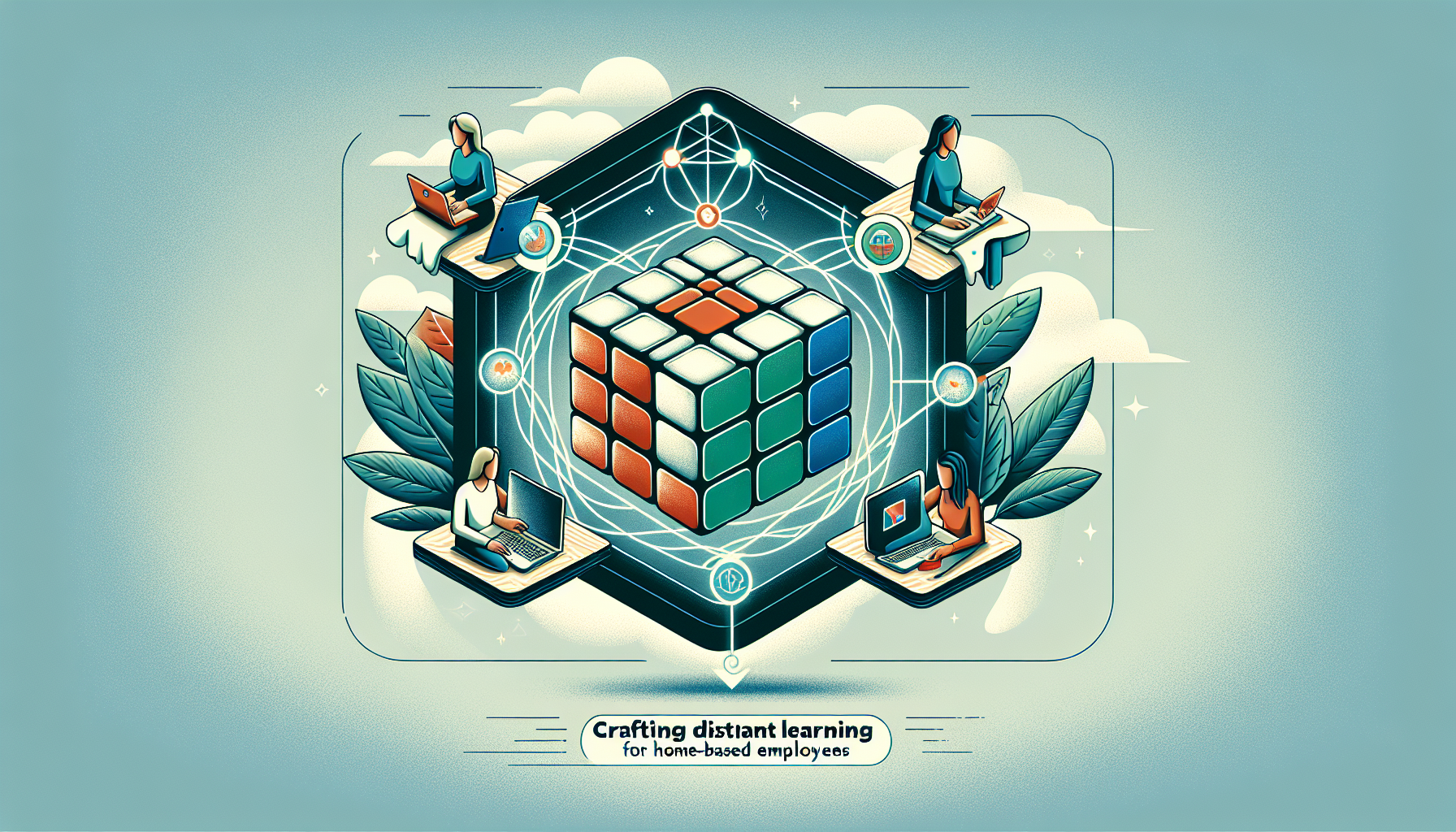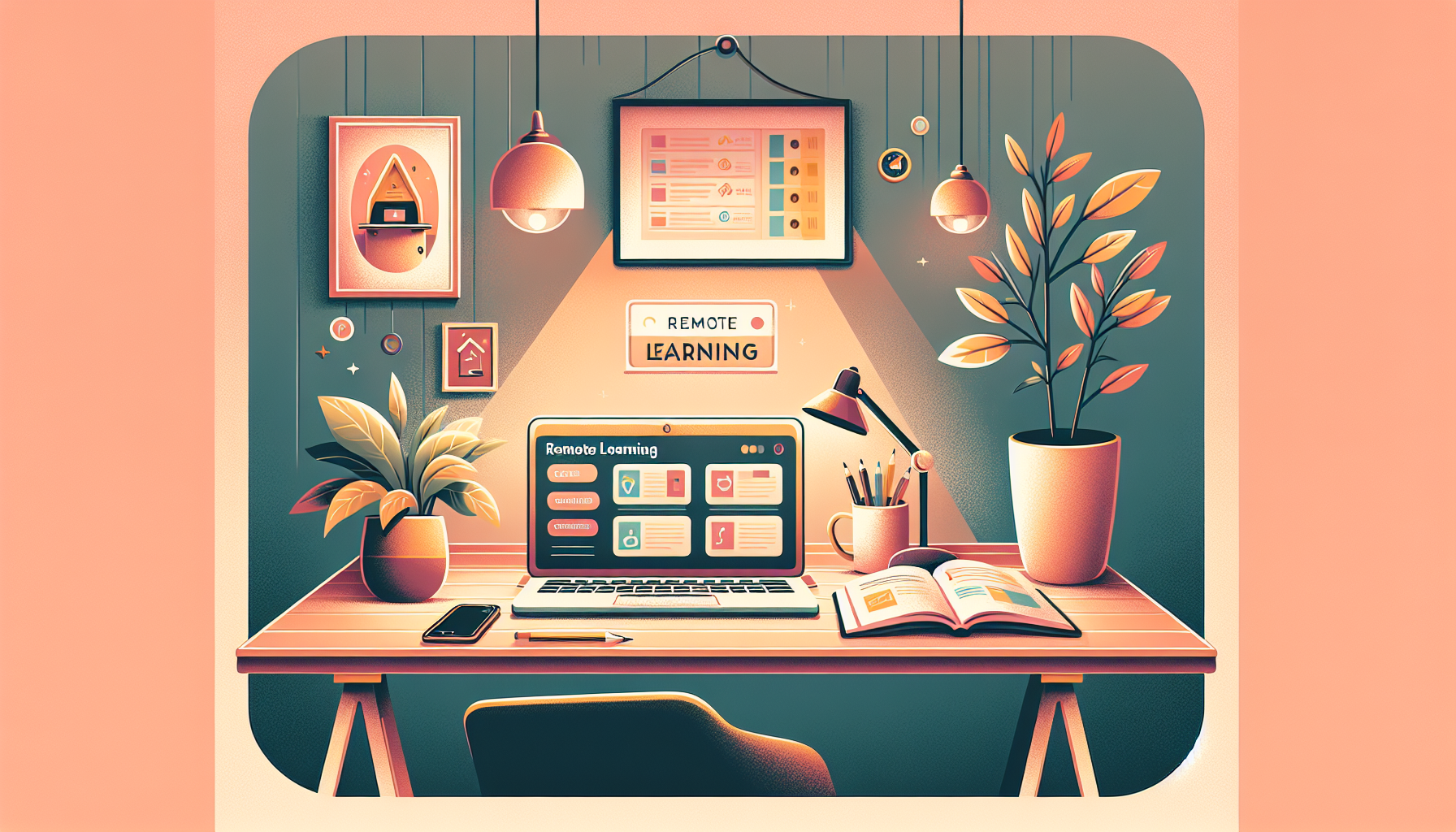Designing eLearning for remote workforces can feel like trying to solve a Rubik’s Cube blindfolded. It’s easy to get overwhelmed by the unique needs of a dispersed team while juggling technology and engagement tactics. You’re not alone if you worry about keeping everyone connected and motivated to learn.
But fear not! If you stick around, I promise to guide you through creating effective eLearning experiences that resonate with your remote workforce. We’ll cover essential strategies that can help you make training engaging, interactive, and, dare I say, fun!
We’ll explore how to truly understand remote workers’ needs, the key principles of eLearning design, and how to pick the right tools. Plus, we’ll dive into creating content that captures attention and measuring how well your efforts are paying off. Get ready to transform your remote training approach!
Key Takeaways
- Understand remote workers’ need for flexibility and a preference for learning during work hours.
- Use microlearning to break content into manageable chunks and cater to busy schedules.
- Incorporate visual elements like videos and infographics to engage visual learners.
- Choose a user-friendly Learning Management System for effective progress tracking.
- Create engaging content through storytelling, case studies, and multimedia elements.
- Foster interactivity with quizzes, discussion forums, and gamified elements.
- Track progress through analytics and gather learner feedback for continuous improvement.
- Provide support resources like virtual office hours and mentorship programs to assist remote learners.

Effective eLearning Design for Remote Workforces
Creating effective eLearning programs for remote workforces is essential in today’s digital age. With many companies pivoting to remote work, the need for structured, engaging online training has never been more important. eLearning allows for consistent training experiences, accommodating a variety of learning styles while ensuring that employees receive the same quality of instruction regardless of their location.
Understanding the Needs of Remote Workers
Remote workers have unique needs when it comes to learning and development. For starters, they often prefer flexibility in their learning schedules.
In fact, a staggering 68% of employees express a preference for learning during work hours.
It’s crucial to design eLearning that fits into their daily routines and allows for immediate application of new skills.
Furthermore, many remote employees are visual learners—66% to be exact—meaning they benefit from graphics, infographics, and video content.
To meet these needs, consider incorporating video tutorials and visual aids into your training modules. This not only captures the attention of visual learners but also makes the content easier to digest.
Key Principles of eLearning Design
There are a few foundational elements that can elevate your eLearning experience. Start by emphasizing clarity and simplicity. Content should be straightforward, eliminating unnecessary jargon.
Consider breaking down your material into manageable chunks. This approach, known as microlearning, is perfect for busy remote workers who might not have hours to dedicate to a single topic.
Also, keep your learners engaged with varied content forms—mix up videos, quizzes, and discussions.
Lastly, ensure the design is mobile-friendly. Many remote employees utilize their phones or tablets, so you want your eLearning platform to be accessible anytime, anywhere.
Selecting the Right Technology for eLearning
Choosing the right technology for your eLearning programs can make all the difference. Start with a solid Learning Management System (LMS) that allows for real-time tracking of progress and performance.
Platforms such as Coursera and LinkedIn Learning not only provide a vast array of courses but also allow you to monitor learners’ advancement.
Furthermore, look for features that support different content types, such as video conferencing tools for live sessions and quizzes to assess understanding. Tools like Zoom or Google Meet can be integrated for real-time interaction.
Lastly, don’t overlook user experience. The technology should be intuitive and accessible, so that remote workers can navigate it without frustration.

Creating Engaging Content for Remote Learners
To keep remote learners interested and invested in their education, you need to focus on crafting engaging content. Start by leveraging storytelling techniques; narratives can make complex concepts more relatable and memorable.
Using case studies and real-life examples can also help learners see the practical applications of their training.
Additionally, make use of multimedia elements. Incorporate videos, infographics, and podcasts to cater to diverse learning preferences.
Interactive content, such as simulations or interactive videos, can catch attention and enhance retention.
Finally, regularly update your materials. Keeping content fresh shows learners that their education is relevant and valued.
Implementing Interactivity in Online Learning
Interactivity is key in eLearning, especially for remote workers who might feel isolated. Start by including quizzes at the end of modules to reinforce learning and assess understanding.
Using discussion forums or chat rooms fosters community and allows learners to engage with peers and instructors.
Gamification can further boost engagement; consider adding elements like points, badges, or leaderboards to incentivize participation.
Don’t forget about tools like interactive simulations or role-playing scenarios, which can provide experiential learning opportunities.
Finally, ensure that feedback is immediate and constructive. This allows learners to make real-time adjustments and feel supported in their learning journeys.
Assessing Learner Progress and Engagement
Tracking learner progress is essential for understanding how effectively your eLearning program is working. Utilize a Learning Management System (LMS) that offers analytics on course completions, quiz performance, and time spent on each module.
This data can help you identify learners who may be struggling and need additional support.
Incorporate regular self-assessments, allowing learners to evaluate their understanding of the material.
Surveys can also gather feedback on engagement levels and the overall learning experience.
Don’t forget to communicate this data back to learners; providing them with insights on their progress can motivate and encourage further participation.
Providing Support and Resources for Remote Learning
Support structures are crucial for remote learners, as they often miss out on the immediate help available in traditional classrooms. Start by creating comprehensive resource hubs where learners can access materials, FAQs, and troubleshooting guides.
Offer virtual office hours where learners can connect with instructors or peers in real-time, providing a space for questions and discussions.
Consider establishing mentorship programs, pairing seasoned employees with new learners to facilitate knowledge transfer and guidance.
Hosting webinars or live Q&A sessions can also help clarify content and build community among remote workers.
Lastly, promote mental well-being. Resources on time management, study strategies, or even mindfulness exercises can greatly benefit remote learners aiming to balance work and education.

Measuring the Success of eLearning Programs
To gauge how well your eLearning programs are performing, you’ll want to look at a mix of quantitative and qualitative metrics.
Start by analyzing completion rates; high figures usually indicate that your content resonates with learners.
Next, assess knowledge retention through post-training assessments to see if learners can apply what they’ve absorbed.
Gather feedback through surveys to understand learner satisfaction and areas for improvement.
Additionally, track performance changes in the workplace—are employees utilizing their new skills effectively?
These insights will help refine your programs and demonstrate their impact on both individual and organizational levels.
Adapting eLearning for Diverse Workforce Needs
Every workforce is made up of individuals with different backgrounds, experiences, and learning preferences, so tailoring your eLearning programs is critical.
Start by conducting surveys to understand the diverse needs of your employees—this helps in personalizing content that is relevant to different groups.
Consider creating materials in various languages or using culturally relevant examples that resonate with the workforce.
Incorporate accessibility features, such as captioning for videos and screen reader compatibility, to ensure no one is left behind.
Lastly, provide options for learners to choose their preferred learning path—some might prefer a self-paced approach while others thrive in structured environments.
FAQs
The key principles include learner-centered design, clear learning objectives, engaging and interactive content, and using varied instructional strategies to accommodate different learning styles. Flexibility and accessibility are also crucial to meet the needs of remote learners.
Create engaging content by incorporating multimedia elements, interactive activities, real-world scenarios, and relatable examples. Encourage participation through discussion forums or quizzes to maintain interest and ensure a dynamic learning experience for remote learners.
Use Learning Management Systems (LMS) that feature tracking and reporting tools, surveys, quizzes, and assignments. Incorporating analytics can help you evaluate learner engagement and progress effectively to make data-driven improvements.
To adapt eLearning, offer content in various formats (video, text, interactive) and consider language needs and accessibility features. Include diverse examples and encourage feedback to continuously enhance learning experiences for all employees.
